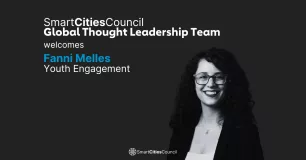
Educational institutions need to live within their budgets—just as cities and successful businesses do. Whether it's adding a new building or modernizing an athletic facility, school officials and their architects and designers need to consider occupant comfort and safety, as well as energy efficiency and cost-effectiveness. Choosing the right building materials has a major impact in all of those areas. If you're not quite up-to-date on the topic, you'll want to read our story on advances in building materials technology. — Doug Peeples
By Tim Lacey, Dow Building Solutions
The smartest schools have been built from the ground up, literally, with materials that boost efficiency, comfort, safety and financial savings. From the very first atom, critical school building blocks—insulation, cement, recreation surfaces—can be developed with chemistries that ensure high marks in the performance, cost and sustainability categories.
Smart walls
At Oberlin College in Oberlin, Ohio, an innovative facility is proving that buildings can give more than they take from the environment.
The Adam Joseph Lewis Center for Environmental Studies was built from the ground up with the latest insulation, building materials and solar technologies. These materials had to pass a meticulous examination by both the building’s designers and the college before they could be specified, meeting criteria for sustainability, performance and efficiency.
The Center used a type of insulation called "extruded polystyrene" which has exceptional water resistance compared to "expanded" polystyrene. This helped the building save energy and improve comfort.
The insulation uses something called "carbon black technology," which yields higher insulation value at a lesser thickness. In this case, an extra 5.6 inches allowed designers to push the cavity wall out 4" and introduce an air barrier system to reduce air infiltration and exfiltration.
This type of insulation also extended the life of the Center’s two roofing systems in an assembly process called PMR, or protected membrane roof. In a PMR assembly, the insulation is placed on top of the roofing surface, protecting it from degradation, shock and foot traffic.
A PMR assembly also allows for the reuse of the insulation if the building is expanded vertically or when an original roof is replaced.
Since its completion in 2000, the Adam Joseph Lewis Center has achieved astonishing success. On average, the building generates about 13 percent more energy than it needs in order to operate. It also does its primary job of keeping students comfortable in warm and cold weather!
Smart running tracks
There’s a type of "binder"—not a paper holder that students carry around—which can improve student’s athletic performance and ensure student safety on the running track.
A waterborne running track binder solution has been used in China at the Nanchang Foreign Language School’s 400-meter permeable running track. Its installation quality, performance, and eco-friendly features have been recognized by the school and the local education administration in Jiangxi, eastern China, as providing a better running place for students.
These binders can be made free of volatile solvent toxics such as benzene, methylbenzene, and dimethylbenzenes, and without a pungent odor, nor any hazardous additives, for instance, plasticizers or heavy metals. Such binders have good adhesion and aging resistance for tracks.
Smart concrete
Schools and sports facilities are often made from concrete for cost purposes. But that’s no excuse for walls that become cracked and unsightly. A smart approach to concrete formulation in the design phase will make the structure longer-lasting and better-looking.
The Nanjing Youth Olympic Center, also in China, enhanced the durability and aesthetics of its facades with acrylic technology in the concrete. Such technologies enable greater durability and surface protection, enriched appearance and design aesthetic.
Very stringent requirements have been set for design and materials to ensure the Center will become an iconic landmark in Nanjing and fully comply with Olympic sustainability goals. High-performing, environmental friendly and energy-efficient materials thus become a natural choice. As a result, GRC (Glass Fiber Reinforced Concrete), a green decorative material replacing masonry, stone or aluminum panel, with greater flexibility in cutting and shaping, was adopted as the exterior decorative façade for the Center.
A high performance acrylic polymer designed specifically for cement based applications with proven track record was introduced to the façade panels.
This acrylic polymer provides the cement based GRC panels the toughness and the flexural strength that are considered as the key performance requirements and also greatly reduces the chances of cracking.
Overall the acrylic polymer modifications of the GRC façade panels help extend the durability and also retain the aesthetic appeal for a longer duration. Besides, this acrylic polymer is also designed to release no unpleasant odor during the panel fabrication and installation.
Other benefits include water and dirt resistance and protection from deterioration and color fading.
Conclusion
By considering materials in school design and operations—in addition to the connectivity and tech tools that make a school, "smart" administrators can get an A+ on building intelligence. And with the right guides, they won't even need to crack open their chemistry book.
Smart Cities Council Readiness Challenge Grant
Would you like some help to make your city more resilient? The Smart Cities Council will award five American cities Readiness Challenge Grants to make better use of technology to better serve their citizens. It’s part of the White House commitment to help cities use technology more effectively. Start your application today.
Tim Lacey is global business director for Dow Building Solutions at the Dow Chemical Company, a member of the Dow Jones Sustainability World Index



